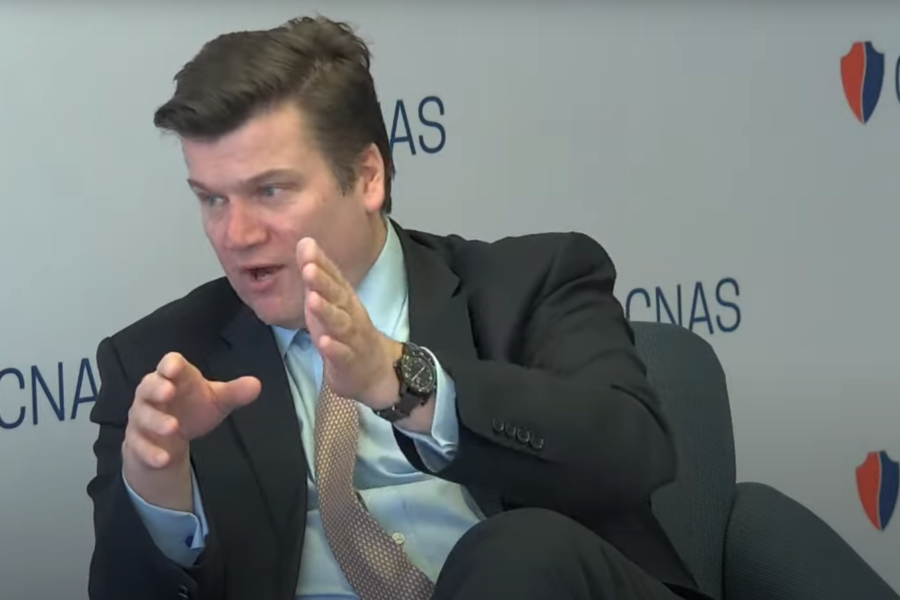Ukrainian President Volodymyr Zelenskyy continues to campaign for Western fighter jets to help counter Russia’s invading and occupying forces, but high-ranking defense officials from the U.S. and U.K. both suggested last week that a transfer of F-16 combat jets are not planned for the near term and might even wait for a post-war “rebuilding” of Ukraine’s military.
U.S. Assistant Secretary of Defense for international security affairs Celeste Wallander and U.K. Minister for the Armed Forces James Heappey both emphasized during virtual events with the Center for a New American Security think tank that discussions about upgraded airpower for the Ukrainians were focused on the “long term”—and both indicated that the long term may stretch beyond Russia’s all-out invasion, which began roughly a year ago.
Those indications come even as British Prime Minister Rishi Sunak has said he wants to start training Ukrainian pilots on Western aircraft as soon as possible. Sunak’s pledge came during a visit by Zelenskyy to the U.K. in which he once more made the case for upgraded aircraft, calling them “wings for freedom.” The British government said it will train pilots on NATO-standard aircraft and will investigate what fighters it might give Ukraine, while not committing to any transfers.
On Feb. 9, Heappey said during a CNAS event that starting pilot training now is in anticipation of potential future needs.
“At the end of the war, Ukraine will almost certainly need to rebuild … within its military, it will need to rebuild and very obviously that rebuilding will probably be through the procurement or gifting of large amounts of NATO-caliber kit,” Heappey said. “And so a conversation was had with the Ukrainians about the state of their air force and what they had got in terms of trained pilots that might be more than they need, given the number of planes that they’ve got remaining in service. And so an opportunity presented itself to start training Ukrainian pilots on the jets that they may have as a post-war air force. And that was the decision that we made.”
A day later, Wallander said the Pentagon’s aid for Ukraine can be broken down by immediate needs drawn from U.S. stocks and more long-term capabilities that will be procured from industry over time. In that first “bucket,” Wallander put artillery, air defense, and ground systems. In the second, she mentioned “airpower” as something Defense Department officials are considering, but not for the immediate future.
“Ukraine’s got to move on to a modern military to have that credible combat power. … And we’ve also worked with industry, not just on making sure allies and partners have the capabilities they need, but that we are able to plan for that kind of capability for Ukraine,” Wallander said.
“Because when there is a either a negotiated settlement or Ukrainian success on its own in taking back its territory, there will be a change in the conditions. Hopefully, Russia will wake up to the fact that it cannot defeat Ukraine, and there will be a drawdown in the intensity in the fighting and that will create an opportunity for Ukraine then to build a longer-term credible defense capability, including airpower, including to complement what it’s doing in ground capabilities and air defense capabilities.”
However, Heappey did leave open the possibility of transferring jets during the war based on Russia’s actions.
“If the consequence of the pilot training is that other options are available to our political leaders later in the year in response to another Russian escalation or outrage—and we have to be clear, each time that a threshold has gone through … it is the way the Russians prosecute this war that breaks the taboo. It’s not the U.K. breaking the taboo, the U.K. simply is the first to respond to whatever outrage the Russians have committed,” Heappey said. “And so as the Prime Minister said, everything’s on the table. But ostensibly, the training of pilots is not with any immediate commitment to donate jets.”
Wallander also mentioned training as a consideration for long-term aid, something Pentagon officials have repeatedly raised when asked about the potential transfer of F-16s. A bipartisan group of lawmakers tried to include funds in the 2023 National Defense Authorization Act dedicated to training Ukrainian pilots and maintainers on American fixed-wing aircraft for air-to-air and air-to-ground combat, but the provision was not included in the final bill. In a Feb. 13 virtual event hosted by the Brookings Institute, Air Force Chief of Staff Gen. Charles Q. Brown Jr. said it would theoretically take two to six months to train Ukrainian pilots on Western fighters.
But while Wallander and Heappey argued that airpower upgrades will likely be a post-war move, advocates say the Ukrainians need better aircraft now to survive the war.
“Unless Ukraine acquires a replacement fighter force of Western origin in the coming months, it will lose the ability to defend its airspace and support its ground forces, and without control of their airspace they will lose,” retired Lt. Gen. David A. Deptula, dean of AFA’s Mitchell Institute for Aerospace Studies previously told Air & Space Forces Magazine. “Some have raised the practical challenges of pilot training, supply, maintenance, etc. The Ukrainian Air Force can overcome these challenges.”
Providing Western aircraft and more advanced air-to-air missiles would enable Ukraine to defend its cities and infrastructure against punishing missile and Shahed drone attacks, analysts say.
“The Ukrainian Air Force fighter force needs modern Western fighters and missiles to sustainably counter the VKS,” the Royal United Services Institute (RUSI) wrote in a November report, referring to the Russian Aerospace Forces. “Russian pilots have been cautious throughout the war, so even a small number of Western fighters could have a major deterrent effect.”
